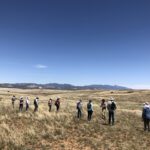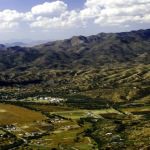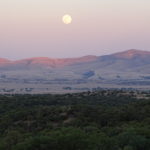By Carolyn Shafer
PARA board member
Published in the Patagonia Regional Times, August 2013.
“We Dig Jobs” is a new bumper sticker seen around town. Recently released reports state that while employment has improved in Santa Cruz County there remains a high unemployment rate–so let’s talk about jobs.
Around 1960 the last mines closed. Jobs evaporated over night. While ranching continued in Eastern Santa Cruz County, the economy was rebuilt around tourism. The region became known as a world wide destination for birders and a destination for USA visitors especially our fellow Arizonans because of its significant biological diversity. Building on the strong economic base of ranching and tourism, other industries such as local food production, wineries (USA Today lists this region as one of the top ten wine trails in the country), eco-tourism and heritage tourism are contributing to the economic growth and employment opportunities.
In December 2011, the Mountain Empire Business Survey identified 217 small local businesses that employ about 800 people. Economist Dr Tom Powers analyzed the survey and concluded that 51% of business sales and about half of the jobs are attributable to landscape and cultural amenities (hiking, biking, hunting, birding, equestrian activities, ranches, relaxation getaways, health and wellness, historic and cultural sites, artisans and artists, dining, shopping). Mining will destroy the landscapes and the cultural amenities and as a result about half the business revenue and half of the 800 existing jobs will be gone.
Corporate representatives of AZ Mining Inc (Wildcat Silver) were recently quoted in the media saying that the Hermosa mining project will bring 250 jobs. However, it appears likely that this community could lose 400 existing jobs because of mining. It is doubtful that many of the 200+ local businesses could survive a 50% loss of revenue likely to result from destruction of landscapes by mining. AZ Mining Inc (Wildcat Silver) projects that the open pit mine would operate for 16 years assuming best case scenario. After which, once again those mining jobs would be gone.
One thing we can do is proactively engage our local unemployed citizens in vocational and educational assessments and other employment services provided by Santa Cruz County Career One Stop. Let’s create a community reality of an economic model that emphasizes job stability, environmental sustainability, equitable economic justice, and the well-being of the individual and the family as more important than the rate of financial return for only a select few.
AUTHOR’S FOOTNOTE: I asked the AZ Mining Inc (Wildcat Silver) representative for specific information regarding the classification of those jobs including salary ranges and qualifications (education, experience, skills). I have been told that information will be provided in a document currently being reviewed for release to the company’s investors. Wildcat Silver’s website states that the production jobs will be 12-hour shifts on a rotating night /day shift schedule (four night shifts, three days off, three day shifts, one day off, three night shifts, three days off, four day shifts, seven days off.)









